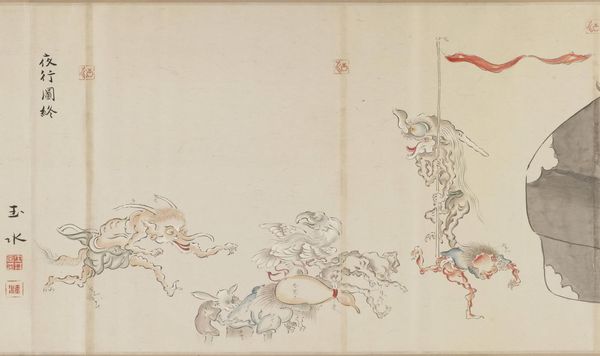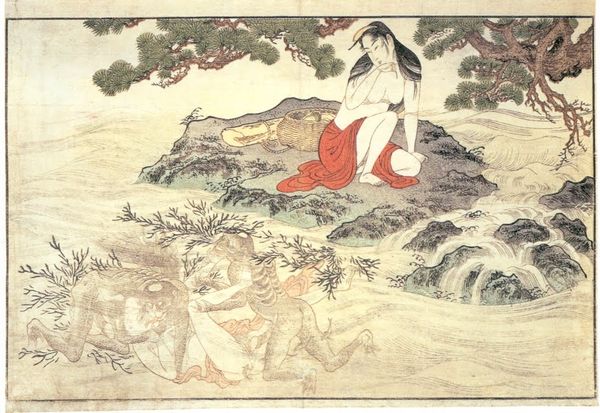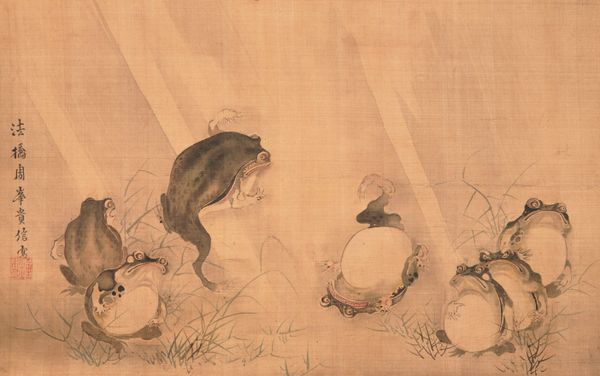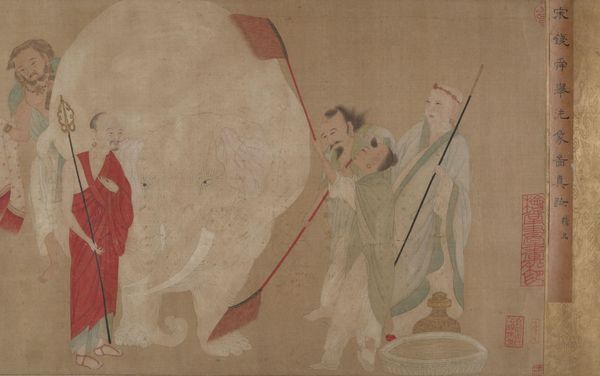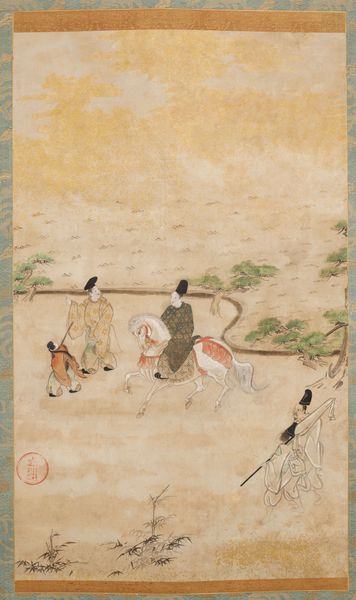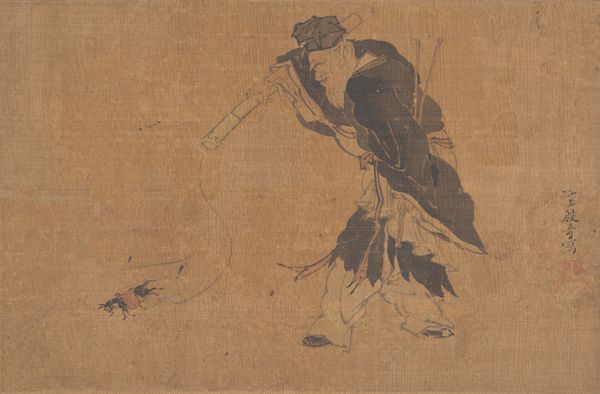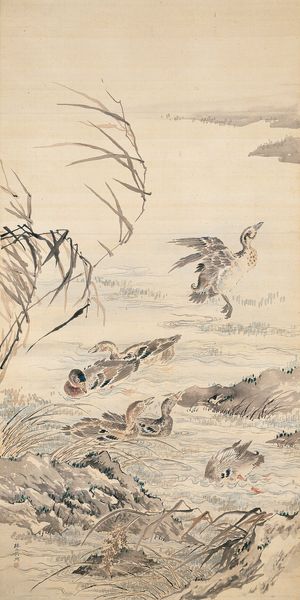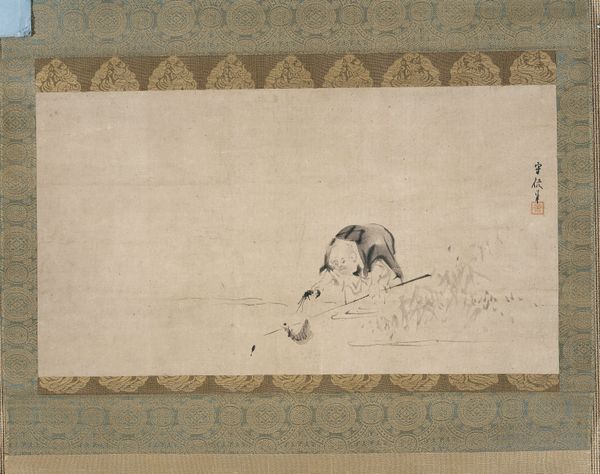
paper, ink, color-on-paper
#
asian-art
#
ukiyo-e
#
figuration
#
paper
#
ink
#
color-on-paper
#
genre-painting
Dimensions: 10 3/8 × 57 1/2 in. (26.35 × 146.05 cm) (image)
Copyright: Public Domain
Ogawa Haritsu created 'Procession of Frogs' in the 18th century, using ink and color on paper. Haritsu, also known as Kenzan II, lived during the Edo period, a time of economic growth, strict social order, and flourishing arts in Japan. This whimsical scene deviates from the traditional representations of nature. Instead of idealized landscapes or symbolic flora, Haritsu presents us with an almost satirical parade of frogs, some of which appear to be dressed in human clothes, and engaged in various activities. It suggests a playful inversion of social hierarchies. The careful composition and skillful brushwork, however, reveal Haritsu's deep understanding of artistic conventions. Consider the perspective through which Haritsu views the world. His choice to animate frogs in this way invites us to reflect on our own place within the broader ecosystem, and to reconsider our understanding of the world. It is also a moment of shared experience with the artist, as we, like him, observe the world with curiosity, questioning the established norms. Ultimately, the 'Procession of Frogs' is not just a lighthearted depiction of animals; it’s a reflection on society, seen through the eyes of an artist who dared to challenge conventions.
Comments
minneapolisinstituteofart almost 2 years ago
⋮
Taken from the same picture scroll as “Frogs in Writing Contest,” this section shows a high ranking “courtier” making his way through a stream on the back of a toad. He wears the ebōshi cap and karingu robes of the imperial court and is flanked by white-robed attendants. Unclothed frogs and tadpoles swarm along the periphery, like spectators at a parade.
Join the conversation
Join millions of artists and users on Artera today and experience the ultimate creative platform.



